It can be very annoying to have a car sputtering when idle. Here are the contributing factors and solutions.
Driving ought to be smooth, but if you start to experience engine sputtering while driving, low fuel may be the first thing to consider.
However, if your fuel gauge is full, it might be an indication of more serious engine issues. Fuel might not enter the combustion chambers, for instance, if a fuel filter is clogged.
Further engine damage could result if the issue is not fixed right away. But what are the reasons behind a car sputtering when idle?
The most frequent cause of car sputtering when idle is a problem with the fuel system. A bad fuel filter, fuel pump, or fuel injector may be to blame for this.
Additionally, a defective ignition coil or spark plugs may contribute to the problem.
Although these are not all potential causes, it’s a good place to start. Here is a list of the most frequent reasons why car engines sputter in more detail.
- Spark Plugs
- Fuel Filter
- Fuel Pump
- Vacuum Leak
- MAF Sensor
- Fuel Injectors
- Catalytic Converter
- Oxygen Sensors
- FAQs
Car Sputtering When Idle, Cause #1. Inefficient Spark Plugs
But… What do spark plugs do? Spark plugs are essential for providing the air/fuel mixture with the required ignition. However, plugs deteriorate over time and stop working as intended.
You will have a lot of unburned fuel in this situation, which results in misfires and causes the car sputtering when idle. To avoid issues like this, the spark plugs ought to be changed frequently after a set schedule.
However, if you haven’t changed them already (if you haven’t questioned how long do spark plugs last, you might have to pay up a spark plug replacement cost (once you learn how many spark plugs in a V8) – which you can save a bit by learning how to replace the spark plugs), you should do so right away because faulty spark plugs can make your engine sputter.
Your spark plugs should be taken out and visually inspected; if they appear worn out and soiled, it might be time to replace them. The ignition coils should also be checked because they might be the source of the same problems.
To learn how to inspect your spark plugs, we’ve written separate guides on what does a bad spark plug look like, as well as how to check the spark plugs. Try to do this as soon as you notice bad spark plug symptoms to minimize further wear and tear.
How To Change Spark Plugs
- Put safety first. Make sure the engine is cool before you park your car on a level, dry surface.
- Cut the ignition coil wire.
- Eliminate the ignition plug’s coil
- Take the spark plug out.
- Insert the brand-new spark plugs (check out our guide here on changing spark plugs).
- Replace the ignition coils or spark plug wires.
- Turn on the car’s engine.
Car Sputtering When Idle, Cause #2. A Dirty Fuel Filter
The fuel filter’s responsibility is to clean the fuel before it enters the engine and fuel injectors. A clogged fuel filter may result in a clogged fuel injector or too little fuel pressure in the engine.
Low fuel pressure may cause the car sputtering when idle because it will make the engine run very leanly. Hence, you’ll have to be aware of the early tell-tale bad fuel filter symptoms and the signs of a bad fuel filter.
The fuel filter should be replaced on a regular basis; if you neglected to do so during the most recent services, it might be time to do so now. Most of the time, fuel filters are inexpensive and simple to replace. As such, a typical fuel filter replacement shouldn’t be too hard on you.
How To Clean Fuel Filters In A Car
- Find the fuel filter first
- Make sure the spray is not exposed to any fuel
- Establish a container below the filter
- Start the fuel filter cleaning process
- Squeezing the filter surface
- Reapply and let dry
- Reinstall the filter
- Change it if necessary
Car Sputtering When Idle, Cause #3. Defective Fuel Pump
The fuel pump and fuel filter both fall under the same category. The fuel pressure will drop dramatically if the fuel pump malfunctions, which may cause the engine to run too lean.
Installing a manual and temporary fuel pressure gauge on the gas pressure rail and then checking the gas pressure at idle and when you rev the engine is the simplest way to find out.
If your fuel pressure is too low, the fuel filter or fuel pump is almost certainly at fault.
How To Replace Fuel Pump
The fuel pump might need replacing if it is not pumping enough fuel to keep up with the engine. Or sometimes, it might be attributed to a bad fuel pump relay. These would then exhibit bad fuel pump symptoms.
The process can be finished in 12 simple steps:
- Put the parking brake on and park the car on a solid, level surface.
- Locate the fuel pump, which is typically located in the gas tank of cars. Open the fuel cap once you’ve found it, then have a helper turn the key to the ON position while you listen to the filler opening.
- If the fuel pump is functioning properly, it will hum for two to three seconds. If no sound is heard, the pump may need to be replaced.
- Locate and check the fuel pump relay and fuse.
- If the fuse blows, replace it with a similar-amperage fuse. Verify the fuel pump’s operation. Your work is finished if the fuel pump functions.
- If the fuse and relay are working, check the fuel pump for power and ground. It might be necessary to take the fuel tank or back seat out. The pump is broken if there is both power and ground at the pump.
- Release the pressure in the fuel system. Disconnect the negative battery cable.
- Siphon or drain as much fuel from the fuel tank as you can.
- Use a block of wood and a jack to support the fuel tank. Any bolts or retaining straps holding the tank to the frame should be removed.
- Remove the fuel pump from the tank and disconnect the fuel lines.
- Connect the pump’s fuel lines. Install the retaining strap after lifting the fuel tank up. The electrical connector and filler tube hose should be reconnected.
- Reattach the battery’s negative cable. Put gas in the tank. To ensure a successful repair, drive the vehicle.
If that doesn’t work, then you’ll likely have to splurge on the fuel pump replacement cost.
Car Sputtering When Idle, Cause #4. Intake Or Vacuum Leak
A leak at the intake manifold may result in an improperly lean mixture, which will cause car sputtering when idle.
Using an EVAP smoke machine is the simplest way to discover this. Since it’s unlikely that you have one at home, another way to check for leaks is to listen for loud noises coming from the engine bay when the engine is idle.
To check for leaks, you can also spritz soap around the intake hoses. Once you’ve identified that a vacuum leak is present, you’ll then have to consider a vacuum leak repair cost.
Car Sputtering When Idle, Cause #5. Damaged Or Filthy MAF Sensor
The right amount of fuel and air must be used in the combustion chamber. These components are monitored by an onboard computer in modern engines. The proper amount of air is supplied to the combustion chambers thanks to the mass air flow sensors.
The sensors’ ability to relay accurate information to the ECU is compromised when they become saturated with dirt particles. The car sputtering when idle as a result of the engine control unit spraying the wrong amount of fuel into the cylinders.
The mass airflow sensor can be cleaned by being carefully removed and cleaned with an electronic cleaner. To be certain, you could diagnose a bad MAF sensor using an OBD scanner, and look out for error codes such as P0102, P0101 (like the P0101 code Nissan), or P1101.
The Symptoms Of A Malfunctioning Mass Air Flow Sensor
1. As You Accelerate, Your Car Will Stutter Or Jolt Ahead
A malfunctioning MAF sensor may cause your automobile to drive poorly, stalling, jerking, or accelerating slowly.
This may happen as you’re speeding down a city street or onto an interstate. These issues could create risky situations that lead to accidents and injury. If you notice any of these signs, you should check your car as soon as you can.
2. You Have A Rich Fuel-Air Ratio
The proper ratio of gasoline to air must be used in each combustion cylinder of your car. Running rich is a sign of both too much fuel and insufficient air.
The following signs that your vehicle is running rich include:
- The exhaust pipe is emitting thick smoke.
- A lower-than-average fuel efficiency
- Unreliable idle
- Check Engine Light
3. You Have A Lean Fuel-To-Air Ratio
Running lean is the polar opposite of running rich. It suggests that there is insufficient fuel and too much air in your car.
Similar to running rich, the MAF sensor is giving the PCM inaccurate information. This time, understate the airflow rather than overestimating it.
Although you will temporarily have more fuel efficiency, running lean for a long time could significantly damage your car. You might come across:
- Engine surging or spluttering
- Seizures on powerful engines at first
- Check Engine Light
Mass Air Flow Sensor Cleaning
A Mass Air Flow (MAF) sensor is what, exactly? The temperature and volume of air entering your engine are both monitored by a MAF sensor.
This data is required by your onboard computer to determine the appropriate fuel dosage for all engine operating scenarios.
The sensor functions by heating a thin platinum wire or plate and determining the current needed to maintain its temperature while air is being forced past it. Dust and oil stains (lest you’re willing to know how to get oil stains out of concrete and how to get oil stains off driveway, as well as how to get motor oil out of clothes) build up over time on the hot wire or plate. Eventually, the wire/plate becomes airstream-insulated thanks to those baked-on particles.
As a result, there are issues with starting, idling, acceleration, and gas mileage.
At that point, automakers like Chevrolet and Ford advise replacing the Mass Airflow sensor. That said, if you regularly clean the vehicle’s MAF sensor, you can save $300 in repairs and maintain peak engine performance.
Mass air flow cleaner prices start at just $7! Every time you replace your air filter, we advise cleaning the MAF sensor. This is how:
The Steps:
Check how the MAF sensor is fastened before heading to the store by removing the air duct that runs between the air filter box and the throttle body.
Buy a Torx tool and a can of CRC Mass Air Flow Sensor Cleaner if you see Torx screws. Use only these cleaners; all others will damage the MAF.
Locate the MAF sensor in the air duct that runs between the air filter box and the throttle body while using the mass air flow cleaner and other necessary tools.
Use a camera to take a picture of the sensor’s setup and connections before you remove it for future reference. Remove the electrical connector from the sensor before carefully removing it from the air duct.
Spray the wire or plate with 10 to 15 spurts of the mass air flower cleaner. Avoid cleaning the components; doing so could break the wire or harm the plate.
Prior to reinserting the MAF sensor in the air duct, give it time to fully dry.
Equipment you’ll need:
Before you begin, prepare the tools you’ll need for this DIY project. This will save you time and frustration.
- Four-in-one screwdriver
- A digital camera and possibly a Torx tool
- The materials needed for this project to build a mass airflow sensor
- Cleaner for mass air flow sensors
If you can’t clean it, you might have to resort to coughing up a mass air flow sensor replacement cost.
Car Sputtering When Idle, Cause #6. Dirty Fuel Injectors
The role of the fuel injectors is to spray fuel into each cylinder’s combustion chamber. The spark plugs then ignite this after combining it with air.
Small filters located inside the fuel injectors can become clogged if the fuel filter is not performing as intended.
The car sputtering when idle and the cylinder misfiring could be a result of the fuel injector spraying too little fuel into the combustion chamber. This is what happens when you have dirty fuel injectors. Or, are experiencing bad fuel injector symptoms.
Any workshop should be able to replace these tiny filters for you because they are replaceable.
Detergents in over-the-counter fuel injector cleaners will dissolve carbon deposits. However, It is best to use these products in advance of any significant injector problems. Our guide on the best fuel injector cleaner might give you some ideas of what to look for.
- Pour the entire contents (or the specified amount) of fuel-system treatment into a nearly empty fuel tank, as necessary, or as directed.
- Add fuel to the tank
- Repeat each time you get an oil change.
Keeping Your Injectors Clean
- Review the kit’s instructions before using it.
- Take off the fuel injector canister’s cap.
- Add the recommended cleaning solution to the canister.
- Above the engine, hang the canister under the hood in a handy location.
- Find the test port for the fuel rail.
- Connect the canister hose to the fuel rail test port using the correct adapter.
- In the fuse box, find the fuel pump relay.
- As instructed, disconnect the fuel pump relay.
- Connect an air supply to the air port on the canister.
- As instructed, adjust the regulated system pressure shown on the meter.
- Start the car.
- Hold off until the canister is empty and the entire solution has passed through the fuel rail.
- Depressurize the line and cut off the air supply.
- Remove the fuel rail hose from the vehicle.
If you can’t clean it in good time, you might otherwise have to cash out for the fuel injector replacement cost.
Car Sputtering When Idle, Cause #7. A Faulty Catalytic Converter
The catalytic converter is essential for removing dangerous gases from the exhaust. If the catalytic converter is too old, it can become clogged and lose parts inside it can obstruct the exhaust pipe. Thus, be wary of the signs of a bad catalytic converter, or the symptoms of a clogged catalytic converter.
Your engine will experience an excessive amount of backpressure as a result (you can also consider mods like a catalytic converter with integrated exhaust manifold), which will cause the car sputtering when idle.
You can attempt to clean the catalytic converter using a cleaner for catalytic converters (to find out more, check out our write-up on damage to catalytic converter).
You will detect a strong rotten egg odor when your catalytic converter is malfunctioning.
Cleaning Technique 1
Our first method is simple, inexpensive, and does not need tampering with or disassembly of the converter. Your fuel system, oxygen sensors, as well as exhaust system are all cleaned with this technique.
However, if your catalyst honeycomb is faulty or your exhaust system is too dirty, this method won’t work.
Knock the converter with a mallet or wrench to make sure this cleaning technique will work for you. Hit it hard enough to make it rattle without breaking or denting it.
If the converter shakes internally, it may have faulty parts or an accumulation of silt that require removal and cleaning.
If you don’t hear any unusual noises, proceed as follows:
The Steps:
Make sure you have enough gasoline and catalytic converter cleaning. Purchase some gasoline in a can as well as a suitable, high-quality catalytic converter cleaner for your car. Or even, using DIY solutions like lacquer thinner as a catalytic converter cleaner.
You can use other cleaners, in contrast to some, with both gasoline and diesel fuel engines.
In your gasoline tank, pour the cleanser. You can find all the information you need for draining the cleaner and how much fuel your car needs on the cleaner’s label.
Go for a drive. Start your car’s engine after you’ve poured the solution, then go for a drive. Driving will help the cleaner circulate throughout the whole exhaust system. The cleaner’s packaging provides instructions on how much to drive for the best results.
To get the catalytic converter sufficiently hot to burn off any obstructions and residue, we recommend driving at speeds exceeding 3000 RPM.
It’s a good idea to set an automatic transmission to “Sport” or a comparable mode. Simply keep the stick shift in each gear a little bit longer before moving to the next one when using one (it’s handy if you know how to drive a manual).
To prevent overheating, watch the temperature gauge in your automobile. You will notice quicker acceleration, less exhaust smoke, as well as much fewer engine misfires if the cleaning process is successful.
Cleaning Technique 2
The catalytic converter needs cleaning if the first method doesn’t produce the desired results due to the debris in your exhaust system.
With the proper knowledge and equipment, the procedure is simple, but as with other exhaust components exposed to the elements, loosening the bolts is typically the most challenging aspect of the job.
To begin, you’ll require:
- Vehicle degreaser
- A big vessel to soak the converter
- Blaster or WD-40 or another penetrating oil
- Floor jack
- Jack postures
- A wrench for the bolts on the converter
- Tool for oxygen sensors
- Power washer
The Steps:
- Allow the exhaust system of the car to cool down before starting.
- Jack up the car until it can easily slide underneath. To keep the car in place, use the jack stands.
- With the use of the oxygen sensor wrench, take out the oxygen sensor.
- Find the converter and then apply penetrating oil which will help the bolts to come off. Allow a qualified mechanic to clean the catalytic converter if it connects to the turbo. Otherwise, our guide on how to unblock a catalytic converter might help.
- After taking out the bolts, take out the converter and give it a look-over. If it shakes with a loud rattle, it has broken internal parts, and you need a new catalytic converter (if you want to learn more, check out our explainer on replacing catalytic converter with flex pipe, as well as the Ford V10 motorhome catalytic converter and the Dodge RAM catalytic converter).
- Note, you can learn how to fix a catalytic converter without replacing it. But in serious cases, you might have no other choice but to pay the high price for a new catalytic converter. If you’re wondering how much does a catalytic converter cost, it’s not cheap.
- Clean the converter’s body, then use a low-pressure washer to pressure wash the interior if there is little to no rattling.
- Fill a container with hot water and degreaser after pressure washing the inlet and outlet pipes.
- Soak the converter for no longer than one hour in water that is hot and a degreaser solution.
- Having soaked, rinse the unit using a low-pressure washer, and then let it pour out until completely dry.
- Now reinstall the oxygen sensor and the system after it has dried. Then go for a drive to see if it gets better.
Car Sputtering When Idle, Cause #8. Dirty Oxygen Sensors
Most contemporary vehicles have an onboard computer that keeps track of every part of the engine. Subsequently, the oxygen sensors that connect to this control the flow of fuel into the combustion chambers.
A rich or lean mixture will result from an oxygen sensor malfunction.
The onboard computer no longer receives accurate information from the oxygen sensors as they become soiled over time. They either release too little or too much fuel as a result of this.
You will need a diagnostic scanner to diagnose the oxygen sensors. To narrow down the possibility that the fault is related to the O2 sensor, see if you’re getting these error codes (among others):
Cleaning An Oxygen Sensor
Using this involves a few more steps than using a product. The following are the removal and cleanup procedures:
- Put your safety first.
- After the engine has cooled, jack up your vehicle.
- Lay a dishtowel on the ground.
- Find sensors.
- Use a penetrating oil spray.
- Use your wrench to remove it.
- Put gasoline in the container.
- Fill the container with sensors.
- Fuel up as necessary (just make sure you don’t accidentally put gas in your car while it’s running).
- Close the container and shake it.
- Allow it to sit all night.
- Lay down a clean shop towel.
- Scrub just enough.
- Use paper towels to dry.
- Re-install.
- Get rid of old gasoline.
Frequently Asked Questions
Why Is My Car Shaking
The most common causes of vibration are worn driveline U-joints, bent wheels, and defective or unbalanced tires. While driving, you could notice that the automobile sways up and down. The seat itself, the steering wheel, or the brake pedal all have the potential to vibrate.
What Does Idle Mean
Idling is the act of leaving a car’s engine running while it is not moving. Drivers are occasionally forced to idle in traffic, but it is not always required. Idling is a habit that drivers can kick, especially after knowing how bad it is for the environment and their health.
What Is RPM In A Car
RPM, or revolutions per minute, is a unit of measurement indicating how quickly a machine is operating. In cars, the crankshaft’s whole rotational frequency and the frequency at which each piston rises and falls in each cylinder are measured using the RPM unit.

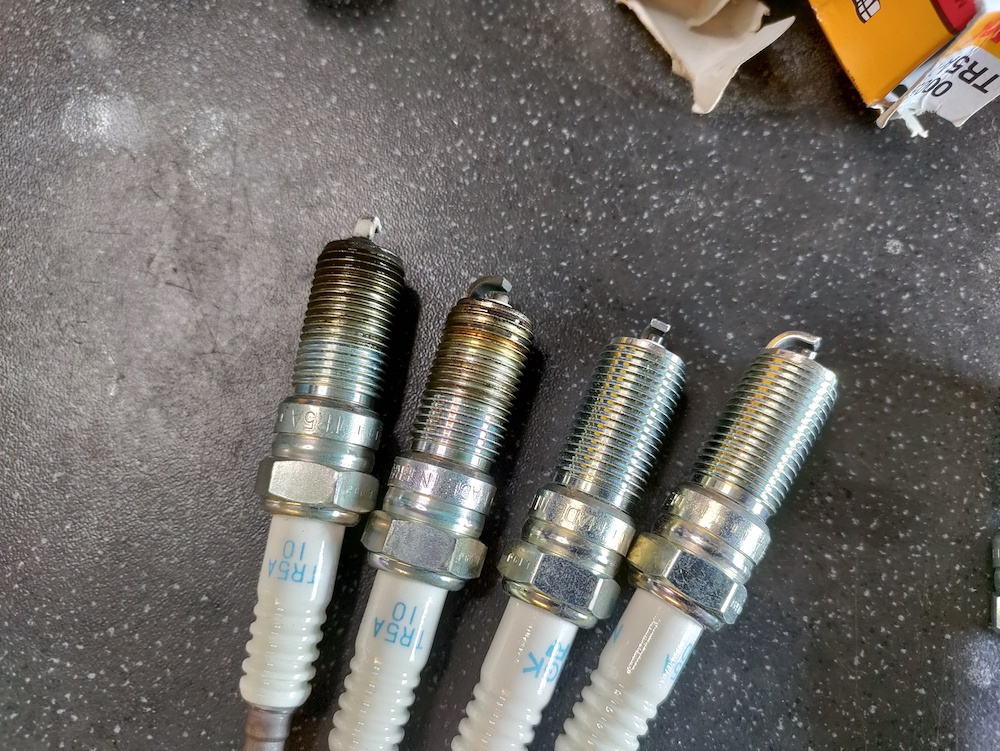
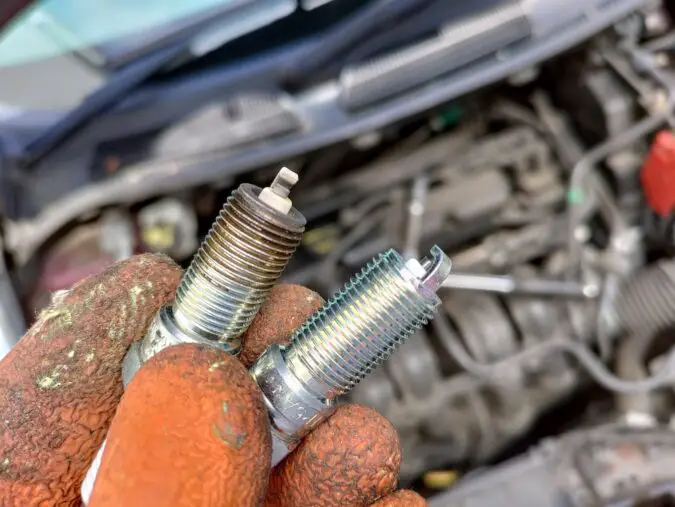
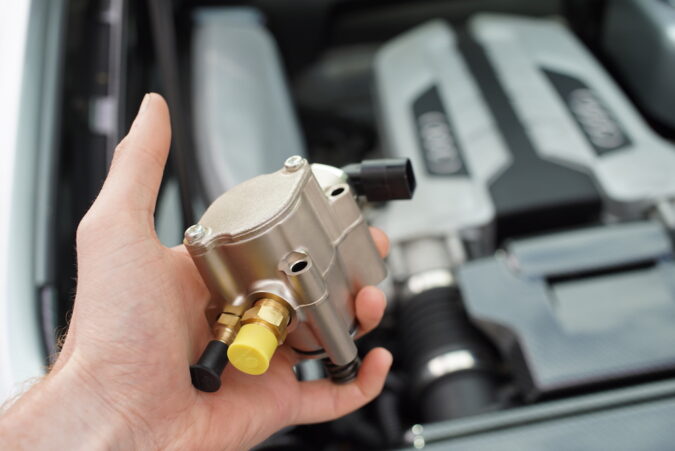
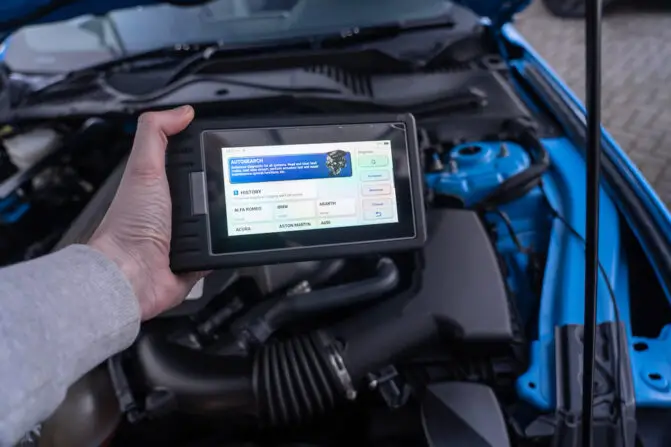
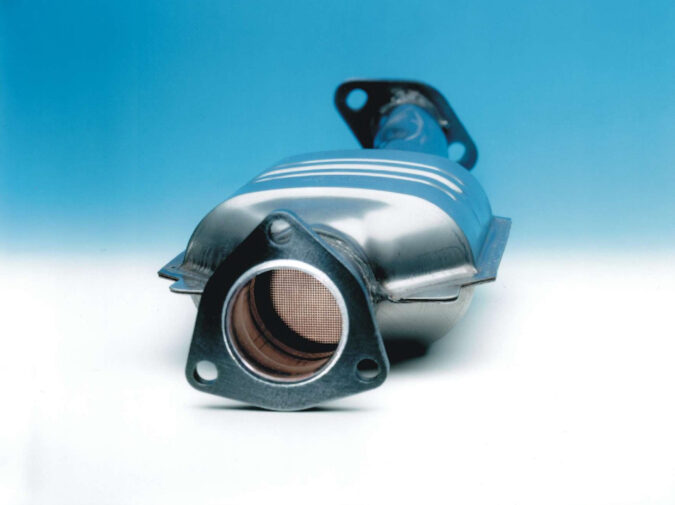
2 comments
My car was having Engine Sputter Problem, I performed one of your tips, Not it has been fixed. Great
That’s fantastic to hear, Justina! I’m glad one of the tips helped you resolve the engine sputter problem in your car. It’s always satisfying when we can fix such issues on our own. If you have any other questions or concerns about your vehicle, feel free to ask.